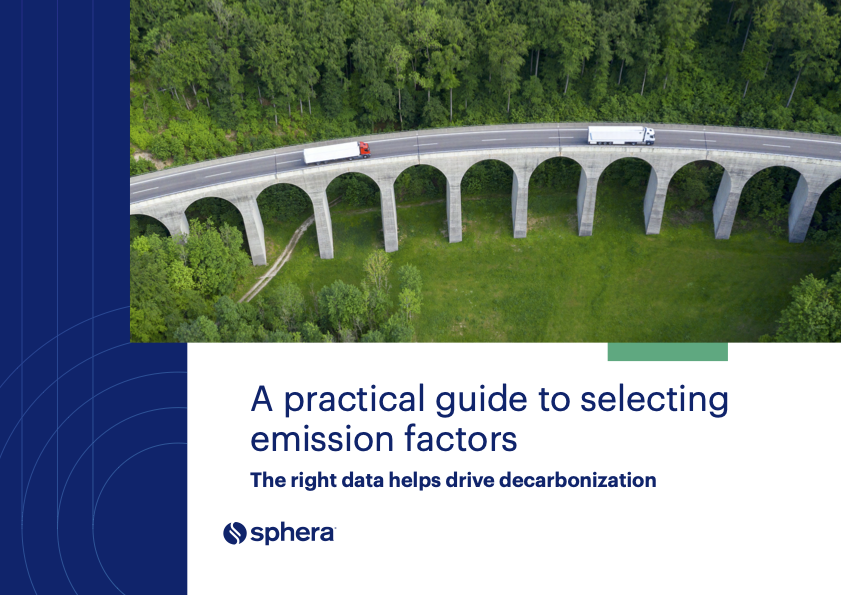Energy Efficiency
The Big Picture
Energy prices and atmospheric temperatures are rising — putting energy efficiency on everyone’s front burner as a smart environmental and business practice. Reducing energy consumption will reduce greenhouse gas emissions and operating, manufacturing, and consumption costs.
The Context
Carbon-dioxide emissions from energy consumed by the commercial sector have jumped nearly 30% since 1980, the fastest rate of increase of any sector in the U.S. Industry is another big emissions culprit: In 1997, industrial users burned fossil fuels to run motors, generate heat, operate machinery, and light buildings, consuming 37% of total U.S. energy and sending approximately 1.5 billion metric tons of emissions boiling into the atmosphere — a dangerous brew of carbon-dioxide, methane, and nitrous-oxide gases. The good news is that by increasing efficiency, businesses and industry can also save money. Energy-management practices and energy-efficient equipment can reduce a plant’s energy costs by at least 20% — a net savings opportunity worth more than $11 billion by 2010 for the U.S.
Key Players
- Energy service companies provide service packages that typically include financing, installation, and maintenance of energy-saving capital improvements. Services are provided through performance contracts, which guarantee that payments will not exceed energy savings.
- Utility companies may work with industrial and commercial consumers to implement on-site energy-efficiency measures, which may decrease usage or shift a portion of it to off-peak hours and rates. The restructuring of the utility industry in many states allows energy users to choose service providers; many utilities entering the deregulated market offer energy from alternative, renewable sources such as wind, geothermal, and solar.
- Suppliers of energy-efficient equipment and services offer a wide range of options to exchange energy-intensive equipment with more efficient analogs. Many have products certified through a third-party program, such as the U.S. Environmental Protection Agency’s Energy Star label.
Getting Down To Business
Energy-efficient practices range from simple to involved: from shutting off equipment when not in use (30% to 40% of personal computers and printers are left running at night and on weekends and are idle as much as 90% of the workday) and installing efficient light fixtures to finding a use for waste heat or reducing boiler blowdown.
- Ingleside Cogeneration L.P. operates a 440-megawatt cogeneration facility in Texas to provide power for the adjacent OxyChem and DuPont chemical facilities. Excess power is sold to nearly 75,000 homes and businesses. The high-efficiency, low-emissions facility will emit two million metric tons less carbon dioxide per year than a coal-fired steam and power generating facility.
- SC Johnson headquarters building in Racine, Wisc., was designed for energy efficiency. Studies projected that the gross annual energy consumption will be approximately 73,000 BTUs per SF — about 60% less than the average for similar buildings. This reduced energy consumption will save SC Johnson nearly $100,000 per year, according to statistics for average new construction in Wisconsin.
- Nisshinbo California, Inc. retrofitted 15 ventilation-system fan motors with variable frequency drives at its textile plant in Fresno, Calif. This change fixed the fan control in a fully open position, improving airflow control and energy efficiency. The plant reduced its energy consumption by approximately 1,600,000 kWh per year and achieved energy savings of 59%. This energy-use reduction translated to cost savings of approximately $101,000 per year, giving the project a simple payback of 1.3 years.
The Upside
- Reduced direct costs — For some industries, such as primary aluminum and industrial gases, energy makes up more than 20% of the value of shipments. Yet even in manufacturing sectors where energy costs are less than 2% of the value of shipments, using less energy saves money.
- Pollution prevention — Energy efficiency helps businesses and industries meet regulations and decrease emissions.
- Improved utility rates — By using less energy during peak times, businesses may be able to negotiate better rates with utilities.
- Easily measured results — Energy and cost savings are easy to track simply by noting energy usage and cost before and after efficiency measures are implemented.
Reality Check
- Most energy labeling programs, minimum efficiency standards, and building energy codes are inconsistent throughout industry sectors and locations. In addition, these codes and standards are mainly voluntary.
- Dramatic efficiency improvement, particularly in industry, may require dramatic changes to operating processes, such as reconfiguring steam systems or switching to efficient motors.
- Retrofitting, purchasing new equipment, or processing changes may require an initial capital investment. Typically, however, those costs are quickly recouped through cost savings.
Action Plan
- Set a corporate energy policy: Make energy efficiency a part of operational procedures and a consideration in every business decision.
- Perform an energy audit to assess where energy efficiency can be improved. Energy audits can be performed by state or local energy offices, the U.S. DOE’s Industrial Assessment Centers, or in-house using assessment tools.
- Make general energy-efficiency improvements to facilities. For example, turn down the thermostat, insulate and block unused windows, turn off machines and equipment when not in use, install automatic lighting controls, use solar water heaters, seal heating and cooling ductwork, reduce hot water temperature, wrap hot water heaters in insulation, and replace air filters regularly.
- Encourage employee participation and innovation. Educate employees on easy-to-follow energy-efficient practices and encourage them to come up with new energy-saving ideas.
- Track energy costs both before and after energy improvements. You may want to separate energy costs from transportation costs.
- Optimize energy in manufacturing processes and activities. For example, capture and reuse waste heat, computerize heating and cooling systems, use high-efficiency motors, etc.
Leads
- Energy Star is an energy-efficiency and environmental-performance program offered through the U.S. Environmental Protection Agency. Companies agree to a series of industry-specific action plans to improve energy efficiency and receive technical assistance, financial information, and public recognition.
- National Association of Energy Service Companies offers assistance locating energy service companies.
- Energy Efficiency and Renewable Energy Network provides energy-efficiency and renewable-energy information from national U.S. Department of Energy laboratories and other organizations. Its Web site has online catalogs; lists of manufacturers and vendors; and links to information on various energy-efficiency topics, including buildings, transportation, industry, and utilities.
- U.S. DOE’s Industrial Assessment Centers sponsor free energy audits for small- and medium-size manufacturers. Assessment teams: recommend specific actions to optimize energy efficiency, waste minimization, and productivity improvements; and provide cost estimates, potential savings, and payback time. The IAC Web site has a database with results of more than 6,000 energy audits and approximately 1,000 industrial assessments, as well as a do-it-yourself assessment workbook, training manual, and productivity guide.
The Bottom Line
Energy efficiency is an obvious solution to an immediate problem. Businesses that want to reduce costs, streamline operations, stay ahead of regulators, and contribute to a healthier environment should look into how they manage their energy — and take responsibility for doing it smarter.









